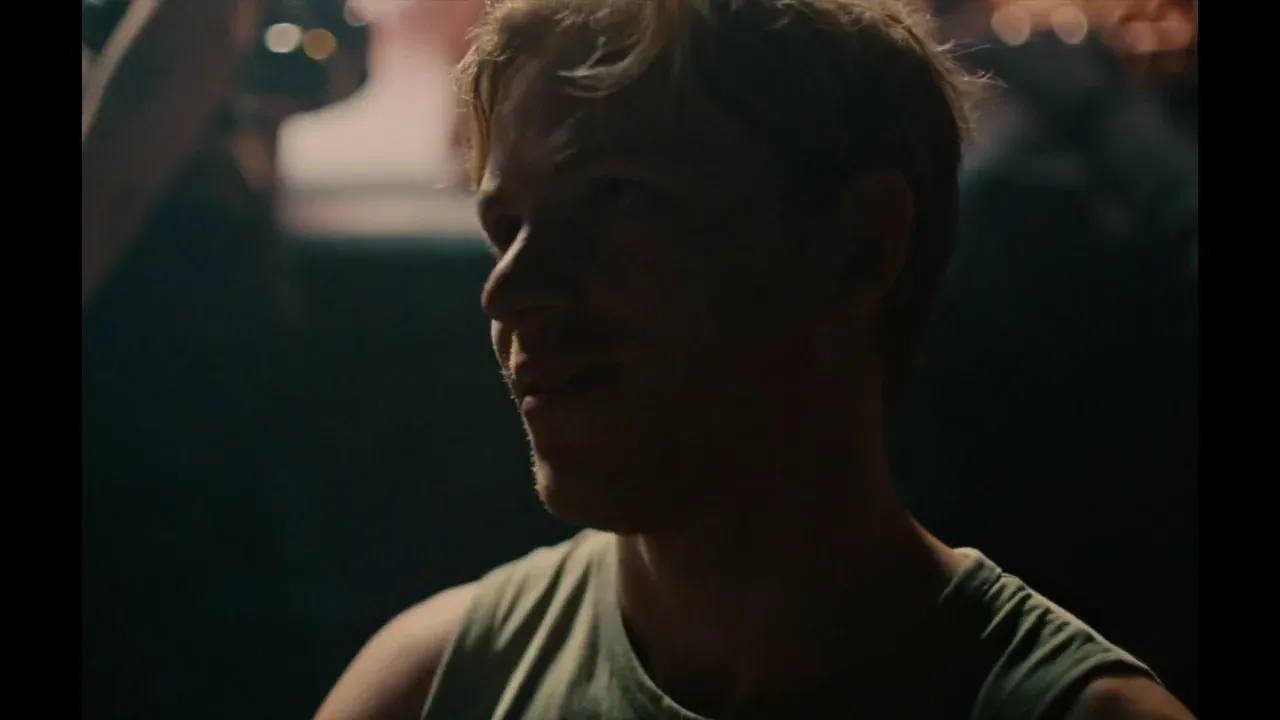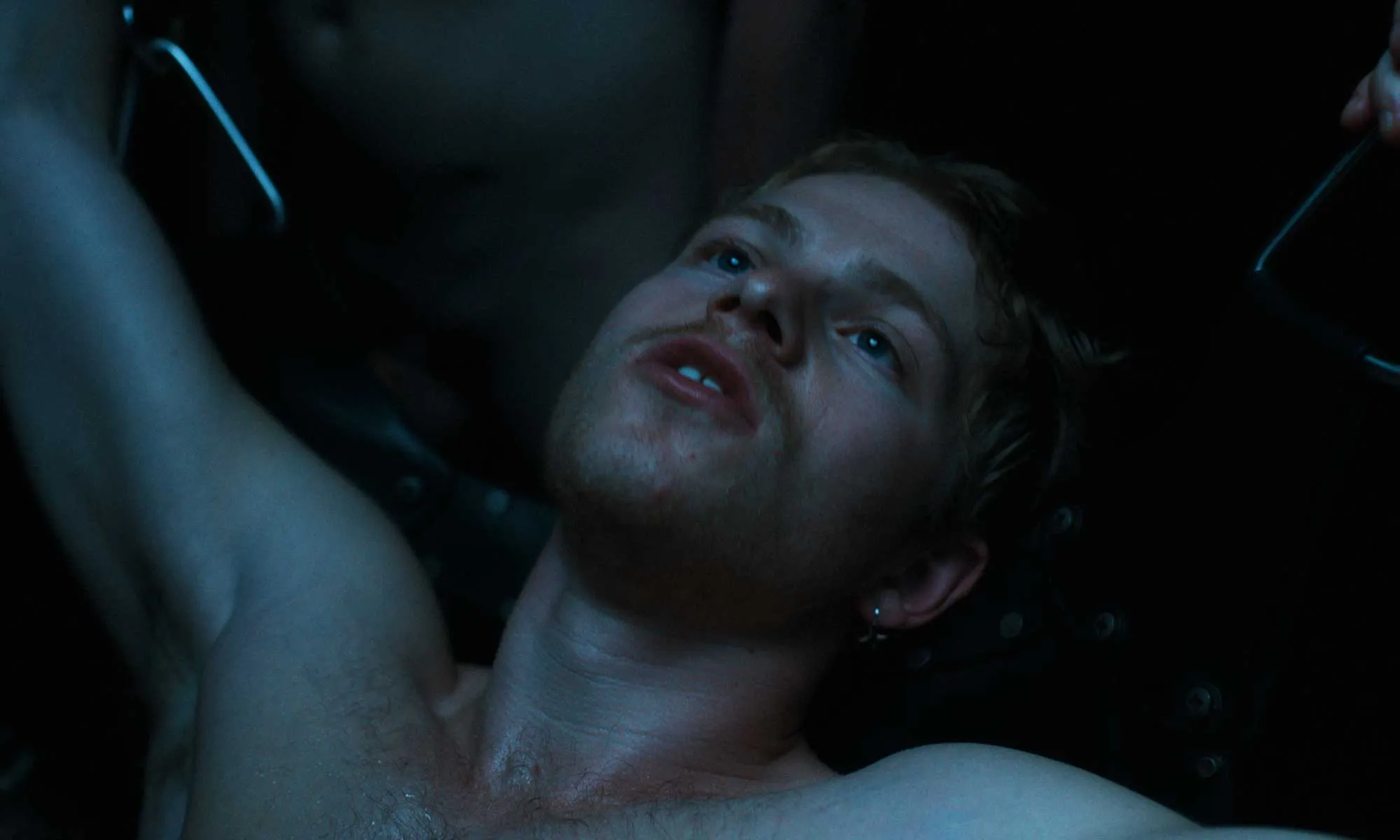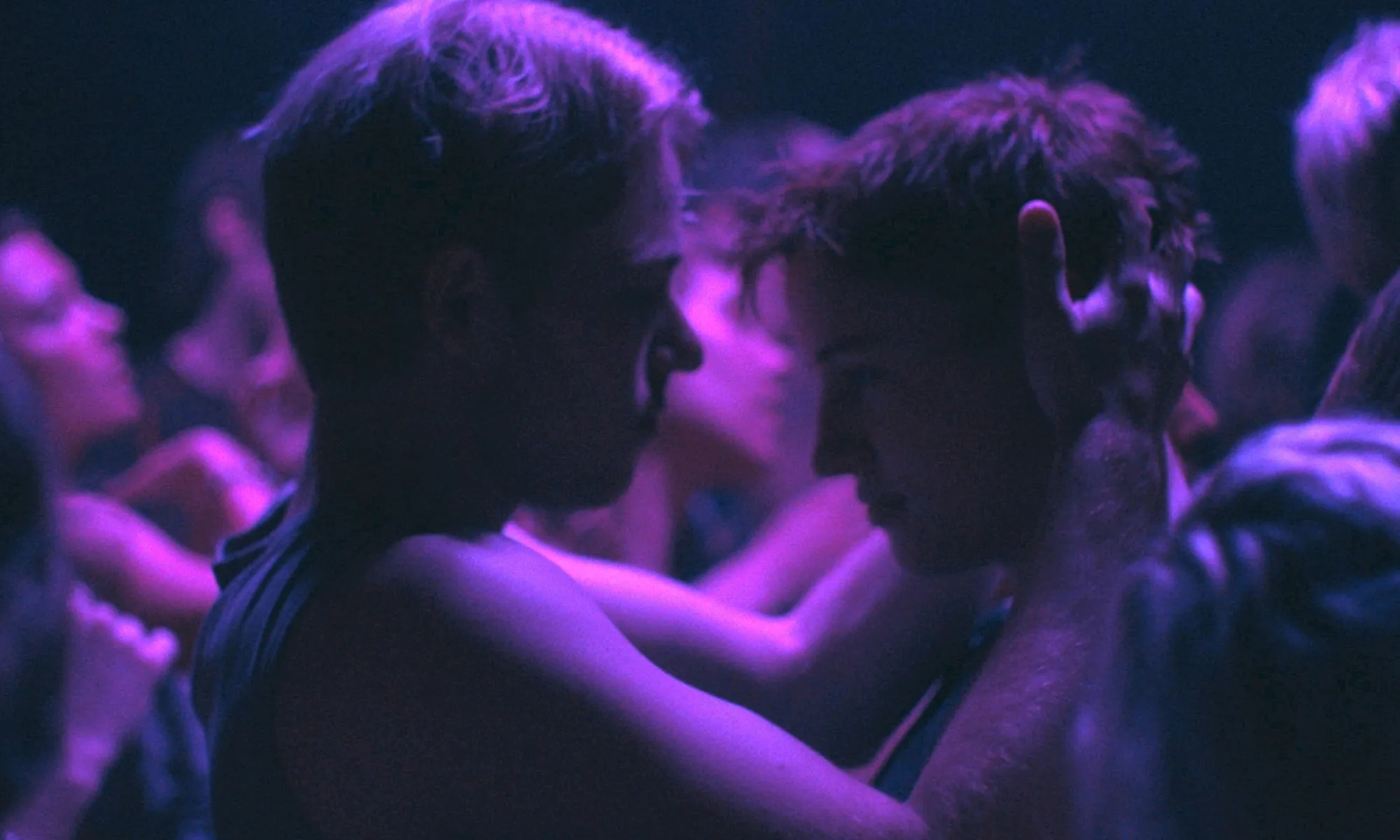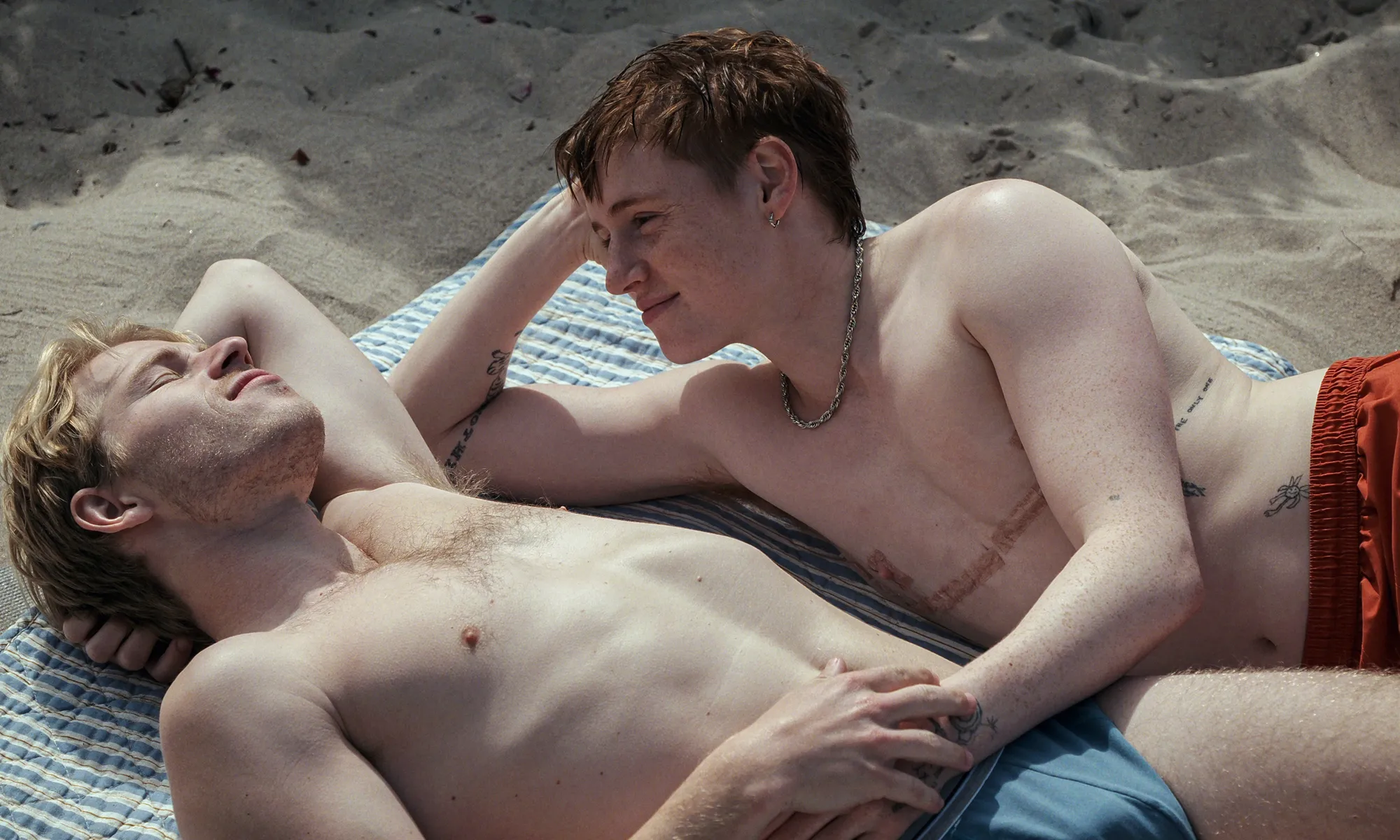“Sauna” unfolds as a compelling queer love story set against Copenhagen’s charged urban backdrop. The film takes us deep into the world of a gay sauna that serves as a stage where desire and solitude intersect. At its center is Johan, a young man whose daily routine in the sauna is punctuated by an unexpected encounter with William, a trans man seeking affirmation amid a culture steeped in swift, physical connections.
This narrative sets up a contrast between fleeting physical encounters and the search for lasting emotional connection. The setting itself—a dimly lit, almost ritualistic sauna—mirrors the characters’ internal conflicts while also reflecting modern urban life, where authenticity competes with the allure of momentary pleasures. The story mixes candid, sometimes stark depictions of intimacy with reflective pauses that invite the audience to consider deeper aspects of identity and connection.
Visually, the film employs a naturalistic style that recalls the observational clarity found in French New Wave cinema, drawing subtle inspiration from directors like Godard and Truffaut. The careful use of close-ups and ambient sound reinforces both the raw vulnerability and the thoughtful reserve that characterize the film’s atmosphere.
Narrative and Plot Structure
“Sauna” makes a strong statement about the power of environments in framing human connection. The film centers its narrative in a gay sauna named Adonis, a setting that carries both literal and symbolic weight. This locale acts as a stage where fleeting encounters and hidden desires take form. Its interiors, dark and maze-like in design, create an atmosphere of secrecy and swift intimacy that mirrors the uncertain emotional terrain its characters traverse.
The film opens with a charged meeting between Johan and William. Their first encounter is marked by an unexpected spark that sets off a series of events filled with moments of physical union and quiet self-reflection. This incident sets the narrative in motion, drawing the viewer into a world where the external spaces reflect inner turmoil and budding affection.
As the story progresses, we see a series of encounters that shift in tone. Scenes transition from casual physical liaisons to tender exchanges marked by confusion and the weight of personal hesitations. One standout moment occurs when a seemingly ordinary meeting transforms into a turning point, hinting at deeper feelings emerging between the two protagonists. These pivotal scenes effectively capture the fluctuation between intimacy and discomfort, revealing the personal and societal forces that shape their connection.
The film is careful with its pacing, opting for a measured tempo that allows the audience to experience the subtleties of its characters’ lives. Occasional departures from a linear sequence—short interludes that offer insight into the characters’ inner thoughts—provide clarity on their emotional evolution. The interplay of softly lit visuals and a carefully composed soundscape enriches these moments, giving viewers a closer look at the shifting dynamics and internal struggles that drive Johan and William’s bond.
Character Development and Relationships
Johan emerges as a relatable figure, coming from a small-town background and seeking authenticity amid the bustle of a city environment. His life is marked by a routine of effortless encounters that serve as a temporary escape from the loneliness he feels.
In the beginning, Johan is content with surface-level connections, a habit formed by his immersion in a scene where appearances and brief moments often take precedence. Over time, however, subtle shifts in his behavior reveal a growing desire for a more profound connection. Small gestures—a lingering look, a pause in routine—signal a change in his inner landscape, as he gradually favors emotional investment over the mere satisfaction of transient pleasures.
William brings a fresh perspective through his experience as a trans man, confronting the challenges of self-identity against a backdrop of societal expectations. His moments on screen convey vulnerability and a quiet determination.
William’s interactions are tinged with restraint; a reserved posture or a hesitative reply often hints at deeper insecurities and the weight of judgments from his community. His progress toward self-acceptance is communicated through tender instances of honesty that contrast sharply with the otherwise brisk pace of the narrative.
Their encounter is marked by an awkward spark, where preconceived ideas collide with a palpable chemistry. The tensions during their initial meeting—clarified by moments of misunderstanding—give way to frequent encounters marked by mutual care. Shared moments in secluded settings reveal instances of softness that suggest a trusting bond slowly overcoming personal and external hesitations.
Supporting characters add further complexity. Friends and workplace figures contribute background layers that underscore the pressures of a demanding social environment, highlighting the struggles the protagonists face while echoing the influence of an ever-changing urban scene. Their presence enriches the main storyline, offering quiet interludes that underscore the evolution seen in both Johan and William.
Themes, Symbolism, and Social Commentary
“Sauna” presents a modern take on intimate relationships through its portrayal of queer desire within a busy city setting. The film paints a picture of current romantic life, where shifting emotions and personal connections blend in an urban environment.
It shows a realistic look at how individuals form attachments amidst a steady flow of short-term relationships. The characters’ experiences capture the clash between long-held sexual norms and evolving ideas of intimacy. This is seen in the way the space of the sauna hosts fleeting encounters yet also serves as a rare stage for deep personal exchanges.
The experience of William is a clear example of the hurdles faced by someone reshaping their identity. His struggles reveal the harsh effects of prejudice and the difficulty of being seen for who he is. Scenes portray him dealing with the weight of assumptions and the challenges of self-acceptance in a society where appearances still speak loudly. The film respects his personal growth by allowing his moments of vulnerability to shine through without reducing his experience to a mere subplot.
The sauna itself stands as a visual metaphor that carries many layers. Its dimly lit corridors and private rooms create a setting that both hides and reveals. Subtle camera work captures moments of care—like the deliberate attention to physical details—and these nuances invite a closer look at the characters’ inner lives. Such scenes, whether during cleaning routines or shared quiet moments, remind us that the most real emotions often settle in the ordinary.
A quiet commentary on exclusion appears through interactions that challenge rigid social expectations. This film makes a strong statement regarding how some spaces, meant to embrace individuality, can carry a hidden stance against diversity in appearance and thought. The narrative observes issues such as healthcare access and social acceptance in a way that reflects current discussions about identity and rights.
Themes, Symbolism, and Social Commentary
“Sauna” captures contemporary queer desire in an urban setting where personal connections shift and evolve naturally. The film depicts love as something that transforms quickly, showing individuals in a lively metropolis redefining what intimacy means. It reflects a scene where established ideas about sexuality meet new expressions of connection—a meeting spot where fleeting hookups serve as a backdrop for deeper, unexpected human moments.
William’s experience reflects the challenges of reshaping one’s identity in an environment that is often unyielding. The film presents his daily encounters with a society that misreads his intentions and struggles with the weight of assumptions.
Scenes portraying his search for self-acceptance reveal the harsh realities of living with social expectations that can complicate personal growth. His character is treated with care, and the film gives space to moments where his inner strength shows through in everyday interactions, making his portrayal sincere and thoughtful.
The sauna itself serves as a strong visual icon within the narrative. Its dim corridors and discreet rooms create a space where secrecy and openness coexist. This setting stands as a powerful metaphor; it functions as a hiding place for vulnerability yet also offers a rare setting for genuine connection. Small, quiet details—like the careful attention given to everyday gestures and the intimate use of space—add a tactile quality that speaks to the characters’ inner lives.
Interactions within this confined world challenge long-held views. Some encounters highlight subtle resistance to typical social rules, offering a glimpse into the struggles for acceptance seen in many communities. In doing so, the film comments on issues such as healthcare access and societal hurdles that affect trans individuals, prompting the viewer to reflect on these matters through personal and visual storytelling.
Cultural Context and LGBTQ+ Representation
“Sauna” enters a current wave of films that reexamine standard storytelling, offering fresh portrayals of queer romance. The film displays shifting expressions of affection in today’s urban setting, capturing relationships that reflect the complex moods of modern social life. It presents a clear picture of how intimacy is evolving, challenging the classic ideas of romantic engagement with figures who live with honesty and authenticity.
The film treats the experiences of cis and trans persons with sensitivity while revealing layers often absent in mainstream offerings. It portrays the struggles of a trans man meeting harsh social judgments alongside moments that show his inner strength and sincere expression. Small cinematic details highlight the everyday acts that speak to vulnerability and the longing for acceptance.
In addressing issues such as access to health services and the pressures of societal norms, “Sauna” invites viewers to consider challenges that many marginalized groups face in everyday life.
The Review
Sauna
Sauna offers a sincere cinematic portrayal of modern love and personal discovery within a complex urban queer landscape. The film uses measured storytelling and refined technical choices to capture the inner workings of its characters, highlighting both their struggles and gentle moments of care. Its honest representation of queer and trans experiences makes for a memorable viewing that engages on both an emotional and intellectual level.
PROS
- Authentic portrayal of queer and trans experiences
- Refined technical execution in cinematography and sound
- Intimate character development that feels genuine
- Thoughtful narrative pace and structure
- Visually compelling and emotionally engaging atmosphere
CONS
- Some narrative transitions may feel subtle
- Pacing might seem slow for viewers expecting rapid developments
- Occasional ambiguity in character motivations





















































